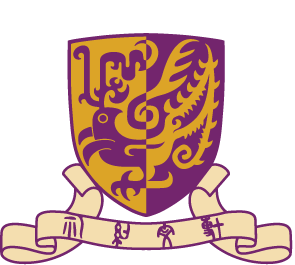
 | 79th Congregation (2015)Professor WU WeishanDoctor of Literature |
With his masterful hands and a lump of clay, he sculpts old and new stories of humanity. Displaying long hair and a devoted heart, he incorporates the cultural essence of both east and west.
Professor Wu Weishan is a world-renowned sculptor with a distinctive Chinese character. His majestic, stylish sculptures consummately blend form and spirit. Their style is not only a practice of the freehand sculpture theory he advocates, but also an epitome of the poetry and vigorous artistic form he pursues. Besides being Director of the National Art Museum of China, Professor Wu also serves as Vice Chairman of China Artists Association, President of the China Academy of Sculpture, founding Director of the Academy of Fine Arts of Nanjing University, Adjunct Professor of the Department of Fine Arts at The Chinese University of Hong Kong, Fellow of Royal British Society of Portrait Sculptors and Member of the Chinese People’s Political Consultative Conference.
Professor Wu was born into a scholarly family in Dongtai, Jiangsu province, in 1962. As he grew up in Jiangnan, his environment –– steeped in humanities of Jiangsu and traditional Chinese culture –– laid a solid foundation for his cultural and artistic education. At the age of 17, while he was studying in Wuxi, he met an old artisan who created vivid figurines by dextrously manipulating clay with his fingers. This technique fascinated him, and inspired him to take up sculpture as his lifelong career, a decision he says he has never regretted.
In 1987, upon graduation from the Department of Fine Arts at Nanjing Normal University, Professor Wu immediately took up the mantle of instructor, while still devoting himself to researching and creating sculpture. He later studied at Peking University and wrote the book Shi jue yi shu xin li. Those 10 years of honing his skills served Professor Wu well. In 1996, he began to make a name in the art scene, drawing international attention. From 1996 to 1997, he was a senior visiting artist at the European Ceramic Work Centre in the Netherlands. When that ended, he was invited to sculpt a portrait of Queen Beatrix Wilhelmina Armgard of the Netherlands, which earned him wide acclaim. Between 1997 and 1998, he served as a senior visiting scholar in the United States at the Department of Sculpture, School of Art at the University of Washington, where he began to establish his own unique style by blending western elements into his eastern-style sculpture. In 1998, he returned to China to serve as a professor at Nanjing University. There he founded the Sculpture Art Research Centre and assumed its directorship. Five years later, the centre was expanded and renamed as the Academy of Fine Arts, and Professor Wu served as its first president. In 2000, he was named the first Y.K. Pao Distinguished Visiting Artist of Hong Kong. In 2003, his work ‘Sleeping Child’ was selected for the Exhibition of the Society of Portrait Sculptors in the UK, and he became the first Asian artist to win the Pangolin Award. In 2011, he won the first China Arts Award. In 2012, he won the only gold award of the Louvre International Art Festival, further elevating his reputation around the globe. The same year, China’s Ministry of Culture hosted the ‘Sculpting the Soul of a Nation’ exhibition at the United Nations headquarters in New York, the National Rome Museum in Italy, France and the UK, showcasing Professor Wu’s works, artistic style and achievements for all to see. Mr Ban Ki-moon, Secretary-General of the United Nations, praised that his exhibition embodied the soul of all humanity.
Over the past 30-odd years, Professor Wu has created more than 400 lifelike, perfectly balanced sculptures, which stand around the world. He has devoted his life to studying and exploring traditional Chinese culture and focused particularly on presenting this tradition and spirit through his sculpted works. He has been called ‘the sculptor of the times’ for his frequent use of historical figures as subjects, among them Laotze, Confucius, Luxun, Qi Baishi, Li Karen and Fei Xiaotong. One such work, ‘the Lao Tzu harmony between Universe and Mankind’, was held in high esteem by French artists when it was exhibited in Louvre Museum, Paris.
A legacy and further development of traditional Chinese techniques and aesthetic, Professor Wu’s sculptures are also an extension and recreation of western artistic concepts. The work describing a calamity group commissioned by the Nanjing Massacre Memorial Hall, is a case in point. The fleeing refugees depicted in the sculpture – some seized with terror, some frail and small, some sacrificing themselves to save the young, and some holding candles to pray for the death – are a reflection of his view on the ultimate philosophical discussion of human nature. This painstakingly crafted masterpiece is a miniature of the enormous suffering in wars, which transcends the boundaries of race and nation, and became a famous masterpiece of World War II in promoting world peace.
Professor Wu is an old friend of The Chinese University of Hong Kong. Over a decade ago, he was an S.Y. Chung Visiting Fellow of New Asia College, and is now an Adjunct Professor at the Department of Fine Arts. In 2010, he was awarded an Honorary Fellowship, and in 2013 he was the distinguished speaker of the Shun Hing Lecture in Arts and Humanities. He has created numerous sculptures of CUHK’s luminaries, including Dr Choh-Ming Li, CUHK’s founding Vice-Chancellor; Mr Ch’ien Mu, the founding Head of New Asia College, and Professor Charles K. Kao, former Vice-Chancellor and Nobel laureate, Professor Yang Chen-ning, Dr the Honourable Simon Li Fook-sean, and Professor the Honourable Jao Tsung-I. The bust of Professor Jao stands side by side with the bust of Dante on the first floor of the CUHK University Library. Professor Jao is pleased and quipped, ‘I can engage in a conversation with Dante now’.
In celebration of CUHK’s Golden Jubilee, the University established the Golden Jubilee Alumni Garden at the eastern gate of CUHK in 2013. Fifty-one trees were planted in this garden, along with the installation of a giant bronze sculpture named ‘The Integration’. The sculpture features faces of a youngster and an old man, creating dialogues of life and spirit, time and space, symbolizing the inheritance of science and humanities. Standing tall at the eastern gate as a guardian of CUHK, this sculpture was designed and crafted by Professor Wu to mark the University’s 50th Anniversary.
In recognition of his immense accomplishments in the Chinese and international art scenes, his tremendous efforts in integrating Chinese and western arts, and his promotion of Chinese culture, as well as the massive contribution he has made to CUHK, it gives me great pleasure, Mr Vice-Chancellor, to present to you Professor Wu Weishan for the award of the degree of Doctor of Literature, honoris causa.




